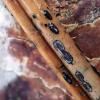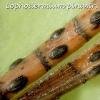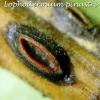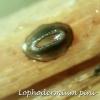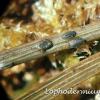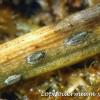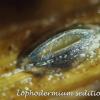
21-12-2025 09:32
Hello.A tiny ascomycete found embedded in wood in

21-12-2025 21:32
Pol DebaenstHello, Garden, Burgweg 19, Veurne, BelgiumOn 10/1

22-12-2025 23:38
Patrice TANCHAUDBonsoir, récolte sur un mur en pierre, apothéci

22-12-2025 00:47
Patrice TANCHAUDBonsoir, récolte à proximité du milieu dunaire

21-12-2025 21:40
Isabelle CharissouBonjour, j'aimerais connaitre les références de

21-12-2025 21:31
Pol DebaenstHello, Garden, Burgweg 19, Veurne, BelgiumOn 10/1

21-12-2025 21:31
Pol DebaenstHello, Garden, Burgweg 19, Veurne, BelgiumOn 10/1

20-12-2025 23:08
Patrice TANCHAUDBonsoir, récolte sur sol sablonneux dans l'arri�
Lophodermium pinastri (?) sur aiguilles de Pinus nigra var. austriaca
Bernard CLESSE,
11-04-2021 11:40
 Bonjour à toutes et tous,
Bonjour à toutes et tous,Avec cette écologie (aiguilles de pin noir d'Autriche) et la ligne noire transversale sur l'aiguille, puis-je directement aller vers Lophodermium pinastri ou dois-je faire la microscopie ?
Bernard
Eric Bionne,
11-04-2021 17:14

Re : Lophodermium pinastri (?) sur aiguilles de Pinus nigra var. austriaca
Hello Bernard.
ça a bien l'air d'être lui avec ces zones noires transversales..
Mais si tu le demandes, je veux bien admirer quand même ses suberbes longues spores assymétriques sur ta non moins superbe préparartion micro !
:-)
Amitiés
Eric
Bernard CLESSE,
11-04-2021 18:26

Re : Lophodermium pinastri (?) sur aiguilles de Pinus nigra var. austriaca
Merci Éric, mais pas sûr qu'il soit mûr …
Amitiés,
Bernard
Amitiés,
Bernard
Peter Püwert,
12-04-2021 15:06
Re : Lophodermium pinastri (?) sur aiguilles de Pinus nigra var. austriaca
Hi Bernard,
here are some pictures.
I sent you MINTER et al. Four species of Lophodermium on Pinus. Are you interested in
TEHO, LEO ROY (1935) A Monographic Rearrangement of Lophodermium. UNIVERSITY OF ILLINOIS BULLETIN Vol. XXXII No. 51 9-148.?
Regards Peter.
Bernard CLESSE,
12-04-2021 15:56

Re : Lophodermium pinastri (?) sur aiguilles de Pinus nigra var. austriaca
Hi Peter,
Great thanks for your answer !
Yes, I'm interested in TEHO, LEO ROY (1935) A Monographic Rearrangement of Lophodermium. UNIVERSITY OF ILLINOIS BULLETIN Vol. XXXII No. 51 9-148.
The ascocarps are not mature and with these thin transverse black lines across the needles, it could be Lophodermium pinastri or Lophodermium pini-excelsae.
Best regards,
Bernard
Great thanks for your answer !
Yes, I'm interested in TEHO, LEO ROY (1935) A Monographic Rearrangement of Lophodermium. UNIVERSITY OF ILLINOIS BULLETIN Vol. XXXII No. 51 9-148.
The ascocarps are not mature and with these thin transverse black lines across the needles, it could be Lophodermium pinastri or Lophodermium pini-excelsae.
Best regards,
Bernard

